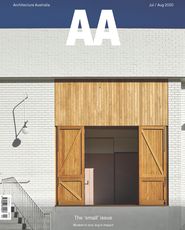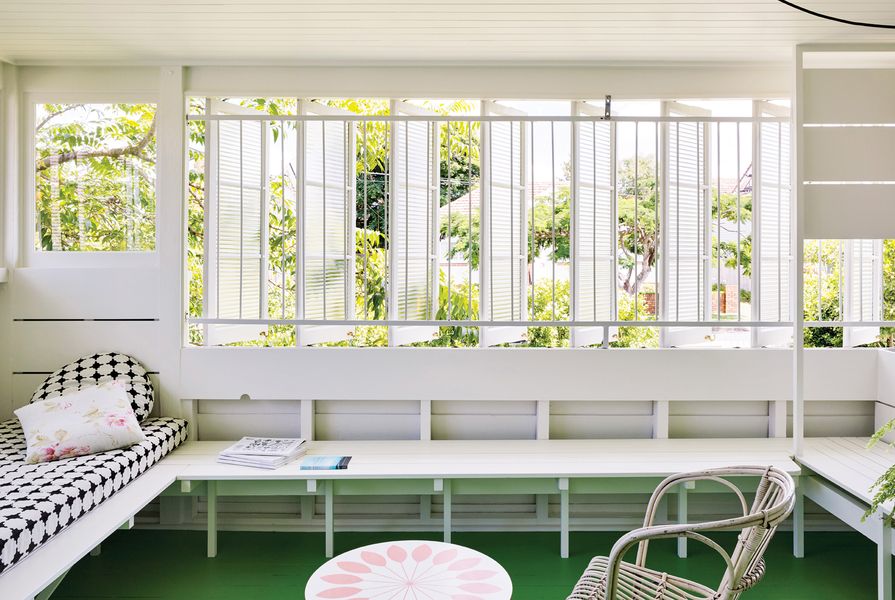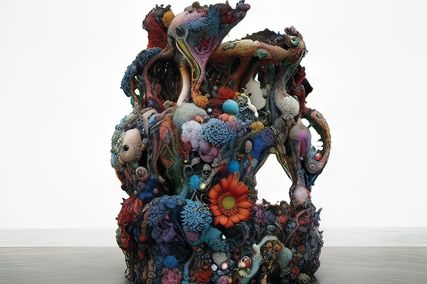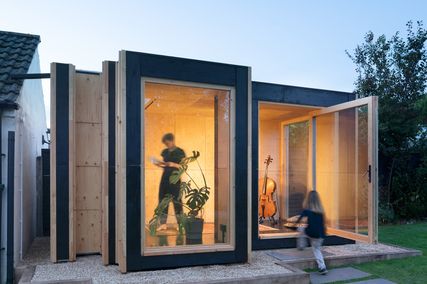For most of us, building a home is linked to a search for contentment. We talk of “dream homes” and “forever houses” because we know that architecture has the capacity to transform the way we live and how we feel about ourselves. But how do we want to live and what do we want to feel? These are difficult questions. In fact, finding contentment is a discipline that feels like it should be taught in schools as part of a “modern survival” course – one that also helps us navigate social media, find the best mobile data plan, and effectively secure our browsing data. Sort of like Scouts, but with less woggle. Knowing who we are and what actually makes us happy is crucial to building a sustainable housing future in this country. And this, I’m quite certain, is a discussion architects are poised to lead.
The suburbs have always been about aspiration: the idea that being liberated from the confines of the inner city would result in a wholesome, model existence. From their origins in the mid-nineteenth century, the suburbs have continued to deliver all the comforts that modern living and free market capitalism can provide, now at an unprecedented scale. And yet, despite all of this, we find ourselves less-than-perfectly contented.
At Holland Park Sleepouts in Brisbane, Vokes and Peters has implemented small moves to increase contentment.
Image: Christopher Frederick Jones
In recent years, many of the architectural discussions I have had with my Vokes and Peters co-director, Stuart Vokes, have centred on contentedness. These ruminations have occurred in parallel with trying to renovate our own houses (a task that has been surprisingly challenging, given that we’ve spent our careers delivering it for other people). Stuart’s three boys share two rooms in his house and, as a result, pressure has been mounting to deliver separate sleeping accommodation. In my two-bedroom cottage, a rundown bathroom is propped up with a besser block where termites have removed the timber bearer from the corner post – a situation that is indicative of the general state of the house. All of these are first-world problems, of course, but they do require our attention. So, how contented is this renovation process about to make us?
Stuart and I have both spent a lot of time hashing and re-hashing our domestic futures. Having seen the process play out many times before, we are both aware of the potential pitfalls. One of the mechanisms that we’ve developed for working with our clients has been the use of a “narrative brief” composed of short stories that describe their daily routines, their personalities and fondly recalled spaces that they have encountered. It’s a process designed to bring us closer to our clients, to better understand who they are so that we can tailor a building to fit. An observation that we’ve made through this process is that the narrative brief also permits us to challenge assumptions. It gives us the insight to be able to suggest, for instance, that dissatisfaction with a kitchen might be resolved by adding a window that lets morning light into the room rather than knocking down the back of the house and starting again. Or that a living room, a sitting room and a rumpus room are really the same room and could be provided by designing one flexible space with the capacity to adapt to all requirements. Through this process, we can’t help noticing that satisfying outcomes often come in smaller packages.
Our own stories are also revealing. Stuart has been able to fuel 10 years of joy in his house by building a number of micro-projects, including a seat on his front sleep-out that allows the family to overlook the front garden. When drawings for the final stage are done, he’ll be adding a single room in a reshuffle that will allow his three boys to each have a small sleeping space of their own. In my case, the drawn- out process of reflection has led our family to reject plans for larger-scale expansion and keep the size of the house pretty much as it is; we’ll just replace the collapsing lean-to structure at the back. Having thought hard about my restless nature and how we live in the house, we realized we’ll get more joy from keeping the garden bigger and planting more vegetables.
Bill Watterson’s comic strip Calvin and Hobbes depicts the adventures of a six-year-old, Calvin (a boy) and his companion, Hobbes (a stuffed tiger). In a memorable sequence, played out over a week’s instalments, Calvin ingests a sickening amount of sugary breakfast cereal in order to collect tokens that can be redeemed for a hat with a spinning rotor on top. Part of the narrative is concerned with Calvin’s soaring imagination that leads to fantastic visions of him taking flight with the helicopter hat and soaring over the city. When the package finally arrives, he is outraged that it requires assembly, despondent when he breaks a piece, having botched the assembly process, and, ultimately, confronted by the underwhelming reality that the materialized object fails to measure up to his expectations. A lesson.
The practice investigates its clients’ personalities, daily routines and favourite spaces in order to tailor its work.
Image: Christopher Frederick Jones
Finding a mechanism that allows us to separate what we think we want from what we actually want would seem to be essential if we are to find our way to a smaller, more sustainable, equitable and affordable housing future. Building small has to be about designing smarter and setting objectives more thoughtfully. We also need to make small housing compelling if we want to bring people on board. Development in the post-war era was characterized by a largely top-down approach to a housing crisis: big ideas and significant oversights. The inclusion of aesthetics and happiness – experience, efficiency, conviviality, dignity, comfort and pleasure – in discussions of small housing strategies could be a significant step toward attracting popular support, not only because we’re housing humans (and they respond well to the humane) but also because it has the potential to create a bottom-up movement.
If architects can demonstrate through our work how small housing can lead to a happier, more beautiful way of life in which people are less indebted to the bank, there’s every chance that the next housing revolution might be supplemented by broad public support. If we can change what we individually and collectively aspire to, we can do what our profession has always done well: lead. In Vokes and Peters’ experience, this starts with how we engage with our clients. Significantly, it is also underpinned by the ideas we choose to promote as a professional body and what we elect to uphold as exemplary architecture.
I’ll leave the final word to Watterson: little boy Calvin, now obsessively chewing gum, tells Hobbes that he needs a heart-rate monitor to track his aerobic performance. Hobbes is predictably nonplussed. What, he asks, is the point of attaching a number to everything you do? Calvin replies, “If your numbers go up it means you’re having more fun.” But it can’t go on forever, can it? And let’s face it: there’s a lot of fun to be had in the smaller numbers, the smaller spaces and the small houses that we love.
Postscript
The world in which I sent the final draft of this article to the Architecture Media team in late February 2020 seems like a distant memory. Writing again in late March, it’s hard to imagine how things might look by the time this issue is published.
Obviously, this would have been a very different article had it been written a month later. As might be expected, many of our plans are now firmly shelved while we wait to see how a post COVID-19 society pulls itself back together. My original intention was to celebrate “small” rather than dwell on the fears and anxieties that can otherwise cloud discussions of sustainability. I continue to hope that this premise retains its relevance.
The current pandemic may well be a dress rehearsal for the looming challenges of climate change, but it can also be a defining moment in our collective efforts to reconstitute our economy and reform our society. The prospect of a small housing future now seems more urgent than ever and architects have a critical role to play.
Source

Discussion
Published online: 21 Sep 2020
Words:
Aaron Peters
Images:
Christopher Frederick Jones
Issue
Architecture Australia, July 2020




















